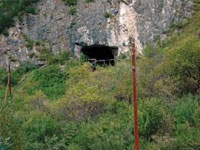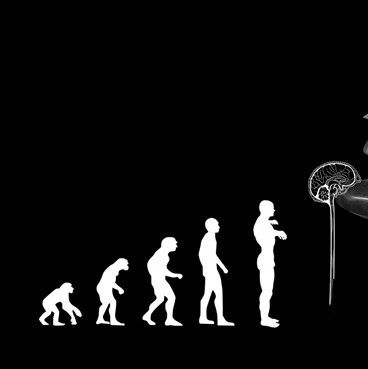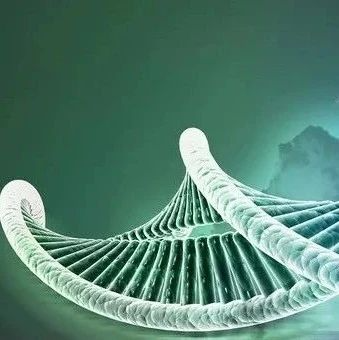
最新一期英国《自然》杂志刊登研究报告说,对俄罗斯西伯利亚一个山洞里发现的古人类化石进行基因检测显示,它不同于现代人和任何已知的古人种,很可能是一种前所未知的古人种。
报告说,俄罗斯研究人员早在2008年就在该山洞中发掘出这块指骨化石,但起初认为它是已研究较多的古人种尼安德特人留下的。后来,这块化石被送到德国进行基因检测,对其线粒体DNA的分析结果显示,它不属于现代人和任何已知的古人种。
尼安德特人生活在大约12万年到3万年前。据介绍,在线粒体DNA对比上,尼安德特人与现代人有202处差异,而这块化石与现代人有385处差异,研究人员因此推断它所属人种的生存年代比尼安德特人更早,应该大约在100万年前。
有专家认为,单凭线粒体DNA还不能确认这就是一种未知的古人种。为此,研究人员尚未为其命名,且计划对这块化石进行基因组测序。如果完整基因组测序显示它真属于一个未知的古人种,这将是首次通过基因手段确认人种,也将是迄今完成的对最古老人类的基因组测序。
推荐原文:
Nature doi:10.1038/464472a
Fossil finger points to new human species
Rex Dalton
In the summer of 2008, Russian researchers dug up a sliver of human finger bone from an isolated Siberian cave. The team stored it away for later testing, assuming that the nondescript fragment came from one of the Neanderthals who left a welter of tools in the cave between 30,000 and 48,000 years ago. Nothing about the bone shard seemed extraordinary.
A finger bone found in Denisova Cave in Siberia could add a branch to the human family tree.B. VIOLAIts genetic material told another story. When German researchers extracted and sequenced DNA from the fossil, they found that it did not match that of Neanderthals ― or of modern humans, which were also living nearby at the time. The genetic data, published online in Nature1, reveal that the bone may belong to a previously unrecognized, extinct human species that migrated out of Africa long before our known relatives.
"This really surpassed our hopes," says Svante P??bo, senior author on the international study and director of evolutionary genetics at the Max Planck Institute for Evolutionary Anthropology in Leipzig, Germany. "I almost could not believe it. It sounded too fantastic to be true."
Researchers not involved in the work applauded the findings but cautioned against drawing too many conclusions from a single study. "With the data in hand, you cannot claim the discovery of a new species," says Eske Willerslev, an evolutionary biologist and director of the Centre for GeoGenetics at the University of Copenhagen.
“I almost could not believe it. It sounded too fantastic to be true.”
If further work does support the initial conclusions, the discovery would mark the first time that an extinct human relative had been identified by DNA analysis. It would also suggest that ice-age humans were more diverse than had been thought. Since the late nineteenth century, researchers have known that two species of Homo ― Neanderthals and modern humans ― coexisted during the later part of the last ice age. In 2003, a third species, Homo floresiensis, was discovered on the island of Flores in Indonesia, but there has been no sign of this tiny 'hobbit' elsewhere. The relative identified in Siberia, however, raises the possibility that several Homo species ranged across Europe and Asia, overlapping with the direct ancestors of modern people.
The Siberian site in the Altai Mountains, called Denisova Cave, was already known as a rich source of Mousterian and Levallois artefacts, two styles of tool attributed to Neanderthals. For more than a decade, Russian scientists from the Institute of Archaeology and Ethnology in Novosibirsk have been searching for the toolmakers' bones. They discovered several bone specimens, handling each potentially important new find with gloves to prevent contamination with modern human DNA. The bones' own DNA could then be extracted and analysed.
When the finger bone was discovered, "we didn't pay special attention to it", says archaeologist Michael Shunkov of the Novosibirsk institute. But P??bo had established a relationship with the Russian team years before to gather material for genetic testing from ice-age humans. After obtaining the bone, the German team extracted the bone's genetic material and sequenced its mitochondrial DNA (mtDNA) ― the most abundant kind of DNA and the best bet for getting an undegraded sequence from ancient tissue.
After re-reading the mtDNA sequences an average of 156 times each to ensure accuracy, the researchers compared them with the mtDNA genomes of 54 modern humans, a 30,000-year-old modern human found in Russia and six Neanderthals. The Denisova Cave DNA fell into a class of its own. Although a Neanderthal mtDNA genome differs from that of Homo sapiens at 202 nucleotide positions on average, the Denisova Cave sample differed at an average of 385 positions.
The differences imply that the Siberian ancestor branched off from the human family tree a million years ago, well before the split between modern humans and Neanderthals. If so, the proposed species must have left Africa in a previously unknown migration, between that of Homo erectus 1.9 million years ago and that of the Neanderthal ancestor Homo heidelbergensis, 300,000 to 500,000 years ago.
Study author Johannes Krause, also at the Max Planck Institute in Leipzig, says that the researchers are now generating nuclear DNA sequences from the bone with the hope of sequencing its entire genome. If they are successful, it would be the oldest human genome sequenced, eclipsing that of the 4,000-year-old Eskimo from Greenland that Willerslev and his colleagues reported last month2.
A complete genome might also enable the researchers to give the proposed new species a formal name. They had originally planned to do so on the basis of the mtDNA genome. But they opted to wait until more bones are found ― or until the DNA gives a clearer picture of its relationship to modern humans and Neanderthals.
Willerslev emphasizes that, on its own, the mtDNA evidence does not verify that the Siberian find represents a new species because mtDNA is inherited only from the mother. It is possible that some modern humans or Neanderthals living in Siberia 40,000 years ago had unusual mtDNA, which may have come from earlier interbreeding among H. erectus, Neanderthals, archaic modern humans or another, unknown species of Homo. Only probes of the nuclear DNA will properly define the position of the Siberian relative in the human family tree.
ADVERTISEMENT
Anthropologists also want to see more-refined dating of the sediments and a better description of the finger bone itself. "I haven't seen a picture of the bone, and would like to," says Owen Lovejoy, an anthropologist at Kent State University in Ohio. "The stratigraphic age for the bone is 30,000 to 48,000 years old, but the mtDNA age could be as old as H. erectus," says Lovejoy. "That doesn't tell us much about human evolution unless it truly represents a surviving ancient species."
The cave has yielded few clues about the culture of the Siberian hominin, although a fragment of a polished bracelet with a drilled hole was found earlier in the same layer that yielded the bone3.
P??bo suspects that other human ancestors ― and new mysteries ― may emerge as geneticists grind up more ancient bones for sequencing. "It is fascinating that molecular studies make a contribution in palaeontology where there is little or no morphology preserved," he says. "It is clear we stand just in the beginning of many fascinating developments."
+++++++++++++++++
涉及论文
Nature doi:10.1038/nature08976
The complete mitochondrial DNA genome of an unknown hominin from southern Siberia
Johannes Krause1, Qiaomei Fu1, Jeffrey M. Good2, Bence Viola1,3, Michael V. Shunkov4, Anatoli P. Derevianko4 " Svante P??bo1
Max Planck Institute for Evolutionary Anthropology, Deutscher Platz 6, D-04103 Leipzig, Germany
Division of Biological Sciences, University of Montana, Missoula, Montana 59812, USA
Department of Anthropology, University of Vienna, Althanstr. 14, A-1090 Wien, Austria
Paleolithic Department, Institute of Archaeology and Ethnography, Russian Academy of Sciences, Siberian Branch, Lavrentieva Avenue, 17 Novosibirsk, RU-630090, Russia
With the exception of Neanderthals, from which DNA sequences of numerous individuals have now been determined1, the number and genetic relationships of other hominin lineages are largely unknown. Here we report a complete mitochondrial (mt) DNA sequence retrieved from a bone excavated in 2008 in Denisova Cave in the Altai Mountains in southern Siberia. It represents a hitherto unknown type of hominin mtDNA that shares a common ancestor with anatomically modern human and Neanderthal mtDNAs about 1.0 million years ago. This indicates that it derives from a hominin migration out of Africa distinct from that of the ancestors of Neanderthals and of modern humans. The stratigraphy of the cave where the bone was found suggests that the Denisova hominin lived close in time and space with Neanderthals as well as with modern humans2, 3, 4.
1 Max Planck Institute for Evolutionary Anthropology, Deutscher Platz 6, D-04103 Leipzig, Germany
2 Division of Biological Sciences, University of Montana, Missoula, Montana 59812, USA
3 Department of Anthropology, University of Vienna, Althanstr. 14, A-1090 Wien, Austria
4 Paleolithic Department, Institute of Archaeology and Ethnography, Russian Academy of Sciences, Siberian Branch, Lavrentieva Avenue, 17 Novosibirsk, RU-630090, Russia







